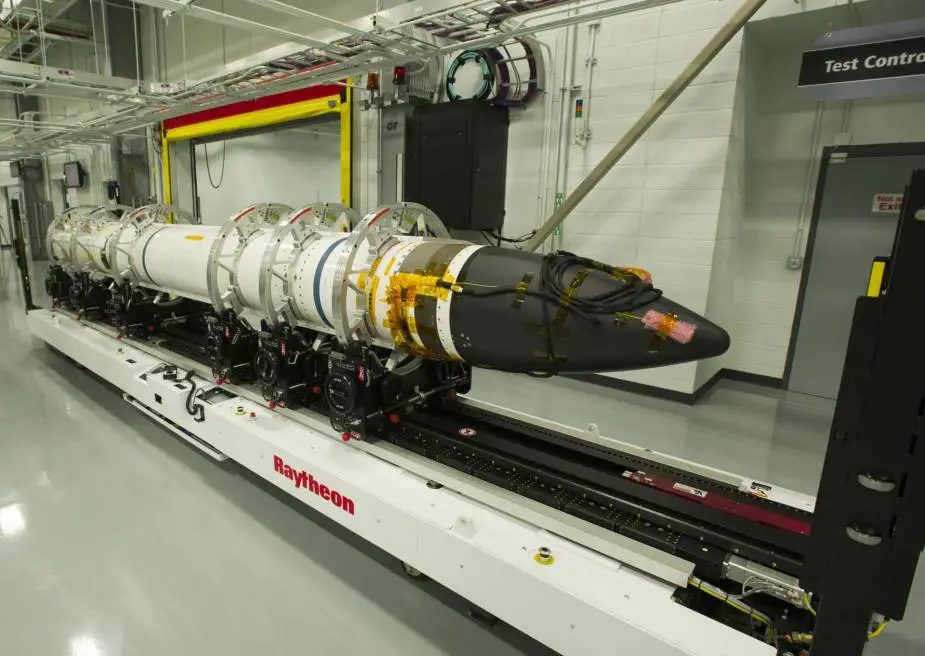Breaking news
Raytheon Missiles and Defense SM-3 IIA intercepts ICBM target.
As part of a historic U.S. Missile Defense Agency demonstration and for the first time ever, an intercontinental ballistic missile target was intercepted and destroyed outside Earth's atmosphere by an advanced SM-3 Block IIA ballistic missile defense interceptor made by Raytheon Missiles & Defense. The interceptor was co-developed with Japan's Mitsubishi Heavy Industries.
Follow Navy Recognition on Google News at this link

Standard Missile-3 (SM-3) (Picture source: Raytheon)
"This first-of-its-kind test shows that our nation has a viable option for a new layer of defense against long-range threats," said Bryan Rosselli, vice president of Strategic Missile Defense at Raytheon Missiles & Defense.
The SM-3 family of ballistic missile defense interceptors has executed more exo-atmospheric intercepts than all other missiles combined and is the only weapon of its kind employed from both ships and land.
Raytheon Intelligence & Space sensors were also part of the historic test from low-earth orbit. The sensors detected and tracked the target and relayed the data to decision makers in a demonstration of space-based early warning.
Raytheon Technologies' missile defense portfolio combines sensors, effectors, C2 and integration work to deliver the most advanced missile defense capabilities available to the U.S. and its allies today.
The RIM-161 Standard Missile 3 (SM-3) is a ship-based missile system used by the U.S. Navy to intercept short- and intermediate-range ballistic missiles as a part of Aegis Ballistic Missile Defense System. Although primarily designed as an anti-ballistic missile, the SM-3 has also been employed in an anti-satellite capacity against a satellite at the lower end of low Earth orbit. The SM-3 is primarily used and tested by the U.S. Navy and also operated by the Japan Maritime Self-Defense Force.
Initial work was done to adapt SM-3 for land deployment ("Aegis ashore") to especially accommodate the Israelis, but they then chose to pursue their own system, the NATO code-name Arrow 3. A group in the Obama administration envisioned a European Phased Adaptive Approach (EPAA) and SM-3 was chosen as the main vector of this effort because the competing U.S. THAAD does not have enough range and would have required too many sites in Europe to provide adequate coverage. Compared to the GMD's Ground-Based Interceptor however, the SM-3 Block I has about 1⁄5 to 1⁄6 of the range. A significant improvement in this respect, the SM-3 Block II variant widens the missile's diameter from 0.34 m (13.5 in) to 0.53 m (21 in), making it more suitable against intermediate-range ballistic missiles.
The highly modified Block IIA missile shares only the first-stage motor with the Block I. The Block IIA was "designed to allow for Japan to protect against a North Korean attack with fewer deployed ships" but it is also the key element of the EPAA phase 3 deployment in Europe. The Block IIA is being jointly developed by Raytheon and Mitsubishi Heavy Industries; the latter manages "the third-stage rocket motor and nose cone". The U.S. budgeted cost to date is $1.51 billion for the Block IIA.


























